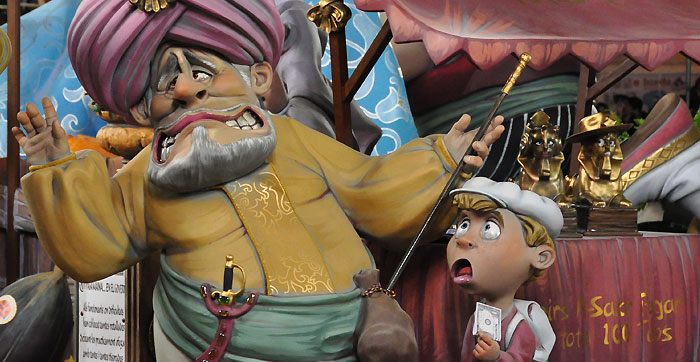Both bizarre and awe-inspiring
Some readers will be familiar with the Las Fallas Festival in Valencia, while others may have even travelled to Spain’s south-eastern region of the Communitat Valenciana in mid-March to witness what is one of the country’s most bizarre and spectacular celebrations.
As with virtually all Spanish festivals, it has an acute cultural significance for locals and there are an incredible amount of rituals, intricacies and nuances that may be lost on the non-native. That said, I will try to describe it as best as I can…
What is Las Fallas?
To give you an idea of what the festival is all about, the plural noun fallas, or falles in Valencian – a dialect of Catalan Spanish spoken by roughly two and a half million native speakers – comes from the Latin facula, which translates as “little torch”.
So, it’s clear that light (specifically fire) is the protagonist of this five-day Fallera Week, which runs from 15th to 19th March this year.
Its origins
Just before spring every year, artisans and labourers in the city of Valencia would down tools of an evening and light small fires in the streets, stoking them with all manner of combustible materials from the surrounding workshops in the neighbourhood.
These bonfires would then be anthropomorphised through the addition of small rags as clothing and a hat on top as a head. It is this burning of human-like monuments that became the basis of the ninot statues – nowadays made using paper-mâché and sometimes reaching several metres in height.

Las Fallas 2019
This year’s Las Fallas Festival in Valencia capital will be loud, bright and colourful, and there will be more wine and paella on hand than you can shake a stick at!
At 2pm every day from 1st to 19th March, an ear-splitting barrage of firecrackers takes place in the Plaza de Ayuntamiento; a fitting wake-up call for late-risers doubtless suffering from the indulgences of the night before at the festival!
During Fallera Week there are huge firework displays, flower offering ceremonies, concerts, parades, exhibitions and religious observances, but the famous burning of the Fallas statues is the fitting climax of the festivities throughout the night on Tuesday 19th March.
Click the link at the bottom of the article for the official Fallas Program 20191.
Why you must go: in a nutshell
In short, Las Fallas is an assault on the senses – but in a good way, if you see what I mean.
The sights, sounds, smells and overall atmosphere of Las Fallas are completely unique, if overwhelming for some. If you are open-minded and revel in a family-friendly party atmosphere, this celebration is for you... and is well worth missing a couple of days of work and staying until the burning of the Fallas on Tuesday night into the wee hours of Wednesday morning.
I, personally, would recommend going at least once. Besides being on every hispanophile’s bucket list, it is one of the world’s leading cultural heritage events. As if to reinforce this point, it was added to UNESCO’s Intangible Cultural Heritage of Humanity list in 2016.
Have you ever been to Las Fallas? If so, what was your experience like? Would you recommend it to other holidaymakers or expats already living in Spain? I certainly would!
 en
en




 Vlaams-Nederlands
Vlaams-Nederlands
0 Comments
Leave a Comment
DISCLAIMER
The opinions and comments expressed by contributors to this Blog are theirs alone and do not necessarily reflect the views of VIVA Homes Under the Sun Ltd, any of its associated companies, or employees; nor is VIVA to be held responsible or accountable for the accuracy of any of the information supplied.
Have you got something to say?